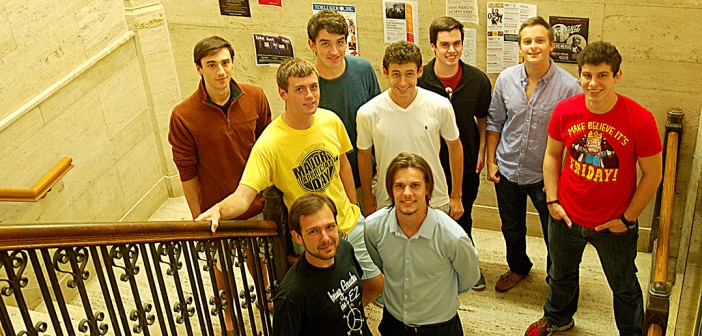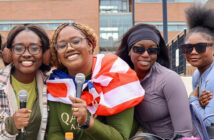A typical car ride between Los Angeles and San Francisco normally lasts six hours. Imagine if it could take only a half hour.
This is what transportation system Hyperloop can accomplish. Hyperloop is a magnetic levitation train placed within a reduced pressure tube. Trains traveling in these tubes would have significantly decreased air drag, which would enable them to reach up to 750 mph.
SpaceX, an aerospace manufacturer, is not currently in business with any Hyperloop companies and is sponsoring a competition, targeting mostly university students, to design and build the best Hyperloop pod system.
Correll French, ’17, an electrical engineering and finance double major, first heard of the Hyperloop competition from a family friend in his rotary club at home. He began doing research and getting in contact with faculty members such as mechanical engineering professor Terry Hart to see if this was a project Lehigh could take on. After getting approval from Interim Dean John Coulter to be the official Lehigh team, French began to recruit members.
The Hyperloop team is not an official club on campus. French said the university has a lengthy process to gain club status and looks to add clubs which are long standing. French has worked closely with the Office of Student Activities to ensure recognition within the school and to assist in running the team somewhat similarly to a club.
The competition is split up into two phases, containing multiple checkpoints. Seamus Cullinane, ’17, said each phase and step of the competition has a hard deadline, and each team must be be granted approval before moving on. Phase one is the design phase.
“This is a submission of what you expect your design to look like, the different components of your design and cost analyst,” Cullinane said. “This phase is not extremely in-depth, but rather just a check to make sure teams are on the right track.”
Following the preliminary submission, the team will be responsible for submitting a hard design plan in the beginning of December. If Lehigh’s design is selected, the team will then attend a conference held in Texas to showcase the design and compete with others.
There are multiple ways to win in Texas. A team can be awarded with the best design overall, or can be awarded for a specific part of their design.
“A big win for Lehigh would be having a company see and like our design, and offer to sponsor us the money to begin building,” French said.
If Lehigh’s team is selected at the Texas conference to move forward, it will begin phase two: building. French estimates the design costing anywhere between $150,000 to $200,000 to build. The team will rely heavily on sponsorships and donations from multiple companies and the university.
Kyle Higgins, ’18, club secretary, will pioneer efforts for fundraising. Students will start to see t-shirts on campus to purchase, the proceeds of which will be donated to the project.
The building of each Hyperloop will take place over six months. In June, each design will be shipped out to California where it will be tested. Following the testing process, a winner will be selected, and different pieces from different designs may also be selected to implement in the final design.
“The idea of going through this entire process and this experience overall is so beneficial,” Higgins said. “This process is prepping us for future jobs, and giving us skills you just don’t get in the classroom.”
Lehigh is competing with around 4,000 other teams. Schools like the Massachusetts Institute of Technology have their preliminary designs already submitted, but this has not hindered Lehigh’s positive attitude. French said he likes his chances.
“We are at a nice level where we are high enough on the engineering spectrum to compete with the minds of any university,” he said.
French believes teams will separate themselves in the design phase based on safety and hospitability within the design itself.
“A lot of our members are good communicators, good presenters, and it’s attributes like those that will help our team separate ourselves,” French said.
The Hyperloop team is currently looking for members. It is open to all students who are passionate about the project. Members are specifically hoping to gain more business students to assist in the fundraising and financing of the project, as well as students who would be willing to assist with building the model if they make it to phase two.






Comment policy
Comments posted to The Brown and White website are reviewed by a moderator before being approved. Incendiary speech or harassing language, including comments targeted at individuals, may be deemed unacceptable and not published. Spam and other soliciting will also be declined.
The Brown and White also reserves the right to not publish entirely anonymous comments.